Why you can trust Credit Card
More Info
On this page
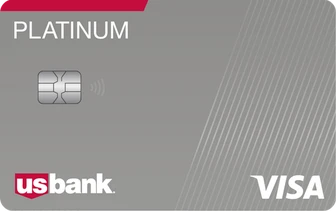
BEST FOR CUSTOMIZABLE REWARDS
U.S. Bank Cash+® Visa Signature® Card

Reward rate
5
5% cash back on your first $2,000 in eligible net purchases each quarter on the combined two categories you choose.
3
5% cash back on prepaid air, hotel and car reservations booked directly in the Rewards Travel Center.
-1
1% cash back on all other eligible purchases.
1
1% cash back on all other eligible purchases.
Intro offer
$200 bonus
Annual fee
$0
Regular APR
16.74% - 26.74% (Variable)
Recommended credit
Good to Excellent (670 - 850)
Pros
- Multiple rotating and fixed bonus categories, which can make it easier to earn rewards quickly
- The $200 sign-up bonus (after spending $1,000 within the first 120 days of account opening) increases the card’s first-year value
Cons
- The $2,000 combined spending cap each quarter for your chosen 5% categories limits your ability to rake in rewards
- Having to track and enroll in rotating categories can be a hassle for some
- New! $200 bonus after spending $1,000 in eligible purchases within the first 120 days of account opening.
- 5% cash back on your first $2,000 in combined eligible purchases each quarter on two categories you choose
- 5% cash back on prepaid air, hotel and car reservations booked directly in the Rewards Travel Center
- 2% cash back on one everyday category, like Gas Stations/EV Charging Stations, Grocery Stores or Restaurants
- 1% cash back on all other eligible purchases
- 0% Intro APR on purchases and balance transfers for the first 15 billing cycles. After that, a variable APR currently 16.74% – 26.74%
- No Annual Fee
- Pay over time by splitting eligible purchases of $100+ into equal monthly payments with U.S. Bank ExtendPay™ Plan.
- Terms and conditions apply.
ADDITIONAL FEATURES
Purchase intro APR
0% Intro APR on purchases for the first 15 billing cycles.
Balance transfer intro APR
0% Intro APR on balance transfers for the first 15 billing cycles.

BEST FOR PERSONAL LOAN ALTERNATIVE
Upgrade Cash Rewards Elite Visa®

Reward rate
2.2
Earn 2.2% unlimited cash back on card purchases every time you make a payment
Intro offer
$200
Annual fee
$0
Regular APR
8.99% - 29.99% (Variable)
Recommended credit
Good to Excellent (670 - 850)
Pros
- You won’t need to use your reward earnings to offset any maintenance fees.
- You’ll earn a bonus after you open a Rewards Checking account and make three purchases with the card in your first 60 days.
Cons
- The high end APR range is well above average. That could prove costly if you don’t have the credit needed to qualify for the lower range and you end up carrying a balance.
- You won’t get a break on interest if you carry a balance since there are no intro APR offers on purchases or balance transfers.
- $200 bonus on your Upgrade Card after opening a Rewards Checking account and making 3 debit card transactions within 60 days.*
- New Feature: Pay your balance in full early each month and avoid interest with EarlyPay.
- Earn 2.2% unlimited cash back on card purchases every time you make a payment
- See if you qualify in seconds with no impact to your credit score
- No Fees – $0 annual fees, $0 activation fees, $0 maintenance fees
- Combine the flexibility of a card with the low cost and predictability of a loan
- Access to a virtual card, so you can start earning while you wait for your card to arrive in the mail.
- Contactless payments with Apple Pay® and Google Pay™
- Mobile app to access your account anytime, anywhere
- Enjoy peace of mind with $0 Fraud liability
- *To qualify for the $200 welcome bonus, you must open and fund a new Upgrade Rewards Checking Account and make 3 debit card transactions within 60 days of your Upgrade Card account opening. The bonus credit will be posted to your Upgrade Card as a rewards credit within 1-2 billing periods following the third debit transaction on your Rewards Checking account. Your Upgrade Card must be in good standing to receive the bonus.
ADDITIONAL FEATURES
Purchase intro APR
N/A
Balance transfer intro APR
N/A
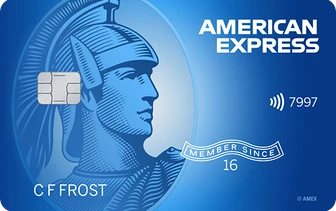
BEST FOR GAS
Blue Cash Everyday® Card from American Express

Reward rate
3
3% Cash Back at U.S. supermarkets on up to $6,000 per year in purchases, then 1%.
1
New! 3% Cash Back on U.S. online retail purchases, on up to $6,000 per year, then 1%.
-1
1% Cash Back on other purchases.
1
1% Cash Back on other purchases.
Intro offer
$200
Annual fee
$0
Regular APR
16.24%-27.24% Variable
Recommended credit
Good to Excellent (670 - 850)
Pros
- It carries one of the best combined cash back rates available at no annual fee at U.S. gas stations and U.S. supermarkets. Those two categories make up a big chunk of the average person’s budget.
- You can earn $7 back per month on The Disney Bundle streaming package, which includes Disney+, Hulu, and ESPN+ (each month you spend $13.99 or more on an eligible subscription, terms apply). To earn that much back in a month via the card’s 3 percent categories, you’d typically need to spend over $230.
Cons
- You’ll only earn 3 percent cash back on your first $6,000 in annual spending in each of the card’s bonus categories (then 1 percent). While that’s a high limit, it could hold you back if you’re sharing an account across multiple households.
- The card carries a 2.7 percent foreign transaction fee, so it’s not a good option if you’re looking for a single rewards card you can use at home and abroad.
- Earn a $200 statement credit after you spend $2,000 in purchases on your new Card within the first 6 months.
- No Annual Fee.
- Balance Transfer is back! Enjoy 0% intro APR on purchases and balance transfers for 15 months from the date of account opening. After that, 16.24% to 27.24% variable APR.
- 3% Cash Back at U.S. supermarkets on up to $6,000 per year in purchases, then 1%.
- New! 3% Cash Back on U.S. online retail purchases, on up to $6,000 per year, then 1%.
- 3% Cash Back at U.S. gas stations, on up to $6,000 per year, then 1%.
- Get $7 back each month after using your Blue Cash Everyday® Card to spend $13.99 or more each month on an eligible subscription to The Disney Bundle, which includes Disney+, Hulu, and ESPN+. Enrollment required.
- Terms Apply.
ADDITIONAL FEATURES
Purchase intro APR
0% on purchases for 15 months
Balance transfer intro APR
0% on balance transfers for 15 months
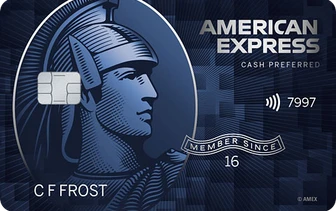
BEST FOR GROCERIES
Blue Cash Preferred® Card from American Express

Reward rate
6
6% Cash Back at U.S. supermarkets on up to $6,000 per year in purchases (then 1%).
1
6% Cash Back on select U.S. streaming subscriptions.
3
3% Cash Back at U.S. gas stations
0
3% Cash Back at U.S. gas stations
1
1% Cash Back on other purchases
Intro offer
$350
Annual fee
$95
Regular APR
16.24%-26.24% Variable
Recommended credit
Good to Excellent (670 - 850)
Pros
- The base reward program is uber-lucrative, making this card a good choice for people looking for long-term value.
- You don’t have to keep track of rotating spending categories or enrollment deadlines.
Cons
- There is no intro APR offer on balance transfers.
- You won’t earn the extra rewards for grocery shopping at major superstores and wholesale clubs, as those don’t count as U.S. supermarkets.
- Earn a $350 statement credit after you spend $3,000 in purchases on your new Card within the first 6 months.
- Buy Now, Pay Later: Enjoy $0 intro plan fees when you use Plan It® to split up large purchases into monthly installments. Pay $0 plan fees on plans created during the first 12 months after account opening. Plans created after that will have a fixed monthly plan fee up to 1.33% of each purchase amount moved into a plan based on the plan duration, the APR that would otherwise apply to the purchase, and other factors.
- Low intro APR: 0% intro APR for 12 months on purchases from the date of account opening, then a variable rate, 16.24% to 26.24%.
- 6% Cash Back at U.S. supermarkets on up to $6,000 per year in purchases (then 1%).
- 6% Cash Back on select U.S. streaming subscriptions.
- 3% Cash Back at U.S. gas stations and on transit (including taxis/rideshare, parking, tolls, trains, buses and more).
- 1% Cash Back on other purchases.
- Cash Back is received in the form of Reward Dollars that can be redeemed as a statement credit.
- $95 Annual Fee.
- Terms Apply.
ADDITIONAL FEATURES
Purchase intro APR
0% on purchases for 12 months
Balance transfer intro APR
N/A
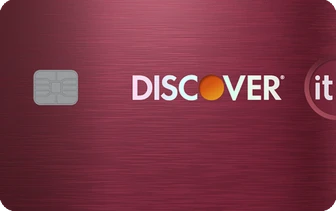
BEST FOR ROTATING CASH BACK CATEGORIES
Discover it® Cash Back

Reward rate
5
Earn 5% cash back on everyday purchases at different places each quarter like Amazon.com, grocery stores, restaurants, gas stations and when you pay using PayPal, up to the quarterly maximum when you activate.
1
Plus, earn unlimited 1% cash back on all other purchases – automatically.
Intro offer
Cashback Match™
Annual fee
$0
Regular APR
13.49% - 24.49% Variable
Recommended credit
Good to Excellent (670 - 850)
Pros
- Discover will match the cash back you earn at the end of the first year.
- There are a few cash back redemption options, including credit to your account and donations.
Cons
- You must enroll to take advantage of the bonus categories each quarter.
- There is a spending limit on your highest cash back category each quarter ($1,500 in combined purchases per quarter).
- Intro Offer: Unlimited Cashback Match – only from Discover. Discover will automatically match all the cash back you’ve earned at the end of your first year! There’s no minimum spending or maximum rewards. You could turn $150 cash back into $300.
- Earn 5% cash back on everyday purchases at different places each quarter like Amazon.com, grocery stores, restaurants, gas stations and when you pay using PayPal, up to the quarterly maximum when you activate. Plus, earn unlimited 1% cash back on all other purchases – automatically.
- New! Discover helps remove your personal information from select people-search websites. Activate by mobile app for free.
- Every $1 you earn in cash back is $1 you can redeem.
- New Intro APR: Get a 0% intro APR for 15 months on purchases. Then 13.49% to 24.49% Standard Variable Purchase APR applies, based on credit worthiness.
- No annual fee.
ADDITIONAL FEATURES
Purchase intro APR
0% for 15 months
Balance transfer intro APR
0% for 15 months
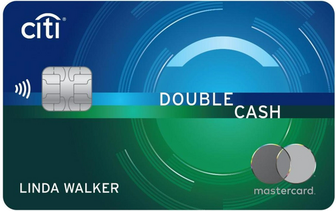
BEST FOR UP TO 2% CASH BACK
Citi® Double Cash Card

Reward rate
2
Earn 2% on every purchase with unlimited 1% cash back when you buy, plus an additional 1% as you pay for those purchases.
Intro offer
$200 Cash Back
Annual fee
$0
Regular APR
16.24% - 26.24% (Variable)
Recommended credit
Good to Excellent (670 - 850)
Pros
- You can convert your cash back earnings to Citi ThankYou points when paired with a card like the Citi Premier® Card, which can be redeemed for travel, gift cards and more.
- There are no spending category restrictions or rotating categories
Cons
- Your rewards can expire with this card if you don’t use it for a year.
- The sign-up bonus spending requirement is higher than you’ll find on many no-annual-fee cash back cards.
- Earn 2% on every purchase with unlimited 1% cash back when you buy, plus an additional 1% as you pay for those purchases.
- For a limited time, earn $200 cash back after spending $1,500 on purchases in the first 6 months of account opening.
- Balance Transfer Only Offer: 0% intro APR on Balance Transfers for 18 months. After that, the variable APR will be 16.24% – 26.24%, based on your creditworthiness.
- Balance Transfers do not earn cash back. Intro APR does not apply to purchases.
- If you transfer a balance, interest will be charged on your purchases unless you pay your entire balance (including balance transfers) by the due date each month.
- There is an intro balance transfer fee of 3% of each transfer (minimum $5) completed within the first 4 months of account opening. After that, your fee will be 5% of each transfer (minimum $5).
ADDITIONAL FEATURES
Purchase intro APR
N/A
Balance transfer intro APR
0% intro for 18 months on Balance Transfers
A closer look at our top prepaid cards
Blue Netspend Visa Prepaid Card: Best for budgeting online
- What we love about the Blue Netspend Visa Prepaid Card: Through Netspend Payback Rewards, you can earn cash back on select qualifying purchases, something rarely seen with easy-to-attain cards. The rewards program also gives cardholders personalized offers as an extra incentive.
- Who this card is good for: Someone with a less-than-stellar credit score who wants less room for doubt when applying for a new tool to spend conveniently.
- Alternatives: If your sole focus is building your credit, the unconventional Self — Credit Builder Account’s accessibility and opportunity to graduate to a valuable card make it a worthwhile choice for individuals just starting out.
Netspend Visa Prepaid Card: Best for no activation fee
- What we love about the Netspend Visa Prepaid Card: When you start your card account, you’ll get access to a high-yield savings account that offers 5 percent APY on the first $1,000 you save. Also, if you refer a friend and they load at least $40 onto the card, you’ll each receive a $20 bonus.
- Who this card is good for: Those looking for a guaranteed easy way to spend or someone who wants access to banking services without an activation fee to get started.
- Alternatives: If you’re a fan of this card’s savings account option, Brink’s Money Prepaid Mastercard offers a similar benefit along with the ability to earn some ongoing cash back rewards.
Pink Netspend Visa Prepaid Card: Best for no credit check
- What we love about the Pink Netspend Visa Prepaid Card: Although it’s a no-credit-check card, you can still take advantage of select cash back and personalized offers once you’ve opened your account.
- Who this card is good for: Someone who wants a convenient way to spend and save while avoiding a credit check.
- Alternatives: If earning cash back is one of your goals, consider checking out the Brink’s Money Prepaid Mastercard, which offers 1X points on signature purchase transactions, and additional points on select limited-time merchant offers.
Self — Credit Builder Account: Best for building credit
- What we love about the Self — Credit Builder Account: Separating itself from the other options here, this account will report your payment habits to the three major credit bureaus—a surefire way to boost your credit score if you practice good habits. Making on-time, sufficient payments with this option can do wonders for your future financial health.
- Who this card is good for: A beginner credit-user who wants to establish their credit through a unique, user-friendly account.
- Alternatives: If you’re seeking access to a physical card right away, the Blue Netspend Visa Prepaid Card is a solid choice that offers potential rewards, albeit one that carries a series of fees.
Brink’s Money Prepaid Mastercard: Best for earning rewards
- What we love about the Brink’s Money Prepaid Mastercard: Thanks to Mastercard, you’ll get benefits to protect against fraud, including $0 liability for unauthorized purchases and a few others. Also this card is a cousin of the Netspend options, allowing you to utilize its reload network of 130,000+ locations.
- Who this card is good for: Someone who wants a prepaid option that brings points and discounts. With this card, you’ll get 1X points on select purchases and limited-time offers, as well as the opportunity to receive up to 50 percent discounts on prescriptions with participating major pharmacies.
- Alternatives: If earning rewards are not a main focus of yours, the Self — Credit Builder Account offers users strong credit-building features and a unique opportunity to graduate to a secured credit card after demonstrating good financial habits.
What are prepaid cards?
How do prepaid cards work?
Similar to debit or checking accounts, prepaid cards allow users to spend up to the amount of money associated with the card. Prepaid card users load funds onto the cards—either online, in person at specific locations, by depositing checks or reloading with cash. Once the money is loaded onto the card, you can spend up to that amount at e-tailers, physical stores and to pay bills online before you have to deposit more money onto the card again.
Keep in mind that most prepaid cards have fees associated with them, such as:
- Reload fees
- Monthly fees
- ATM withdrawal fees
- Inactivity fees
- Transaction fees
Prepaid cards vs. debit cards
What are the differences between prepaid cards and debit cards? Well, prepaid cards and debit cards function similarly—you can only spend the amount of money associated with the card. Prepaid cards and debit cards look similar, and both have card numbers, CVV codes, expiration dates and are often made of plastic with a magnetic stripe on the back.
Where prepaid and debit cards differ is where those funds are stored. Debit cards are linked to a checking account with a bank and are often accompanied by routing and account numbers. Checking account customers add more money to their checking accounts via mobile deposit, direct deposit, ATM cash deposit or bank-to-bank transfers and then use that money with their debit cards. On the other hand, prepaid cards aren’t linked to a checking account and customers load and reload money on the card, much like they would with a gift card.
Pros and cons of prepaid cards
- Pros
- No credit check needed—People with low or no credit can establish responsible credit habits without taking a hit to their credit scores.
- Budgeting tool—Because you’re limited to spending your deposit amount, prepaid cards make it easier to stay with your budget and cut back on monthly spending.
- cons
- More fees than debit cards—Debit cards typically charge overdraft, monthly fees and sometimes ATM fees. On the other hand, prepaid cards can charge those fees on top of transaction fees, reload fees, inactivity fees and more.
- Can’t build credit—Prepaid card issuers don’t report to credit bureaus, so users won’t improve their credit scores over time with this type of card. Secured credit cards are a better option for people with no credit or low credit to increase their scores.
Who should get a prepaid card
Creditcard's Insight
Although prepaid debit cards are often associated with younger shoppers, recent Bankrate data shows that the trend might be slowing. In January 2021, we found that 43 percent of 18- to 31-year-olds have at least one rewards credit card, a figure that was just 33 percent in 2016.
How to choose a prepaid card
What are the fees?
What are your loading options?
Does the card offer mobile access?
When to use a prepaid card
Prepaid debit cards let you use plastic when online shopping or at stores, without the need for a traditional checking account. It’s ideal to use a prepaid debit card in the following scenarios:
- You’re a parent who wants to give your teenager a card that isn’t linked to your personal checking or credit card account to make purchases online or in-person. With a monthly spending limit, prepaid cards can teach teenagers budgeting and responsible card use early in life before they open their own account.
- You’re cutting back on spending and need hard limits, which prepaid cards provide. You can reign in your spending every month by only using a prepaid card—once the money is spent, you can force yourself to wait until the new month to reload the card before swiping again.
Frequently Asked Questions
You can reload a prepaid card much like you would receive money in a checking account linked to a debit card. Here are some ways you could reload a prepaid debit card, depending on the issuer:
- In person at the financial institution that issued the card
- In person at participating retail locations
- Online transfer from a checking or savings account
- Mobile deposit, if available
- Direct deposit, if available
